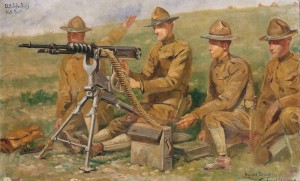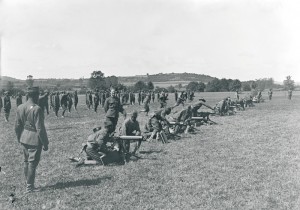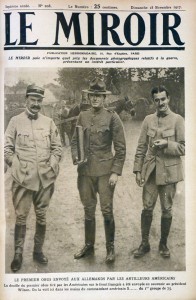
French soldiers instruct U.S. Army Infantry troops on shooting the Vivien-Bessière Grenade with the Lebel Rifle. © Auguste, Goulden/ECPAD/Défense
Armaments
In 1917
When the war broke out, the U.S. Infantry and Marine Units of the A.E.F. were equipped with the standard rifle Model 1903 Springfield inspired from the M1893 Mauser used by the Spanish Army during the 1898 war with Spain. The M1903 Springfield and its Bayonet M1905 was retooled in 1906 for the use of pointed ammunition calibre .30, Model of 1906, known as the .30-06 Springfield cartridge. Although machine-guns developed in Europe had been inspired by American machine guns, the A.E.F was poorly equipped in machine guns and automatic rifles as the production was slow to come on line. The American armaments proved to be insufficient as industries did not have enough factories equipped to make weapons and ammunitions.
The Allied Assistance to the U.S. Army
The two principal sources of supply for the American Expeditionary Forces were shipment and purchases from the British and the French. In August 1917, General Pershing informed the French War Minister that he had established a General Purchasing Board in Paris to coordinate activities pertaining to the purchase canons, mortars and ammunitions from the French government.
In Inventaire de la Grande Guerre published under the direction of François Lagrange, Yves-Henri Nouailhat wrote that France had supplied the A.E.F. all their 75 mm field gun and 155 mm cannon (GPF), 155 CTRs, most of their planes, 57.000 machine-guns and automatic rifles, 10 million shells and 206 million cartridges.





Ajouter un commentaire